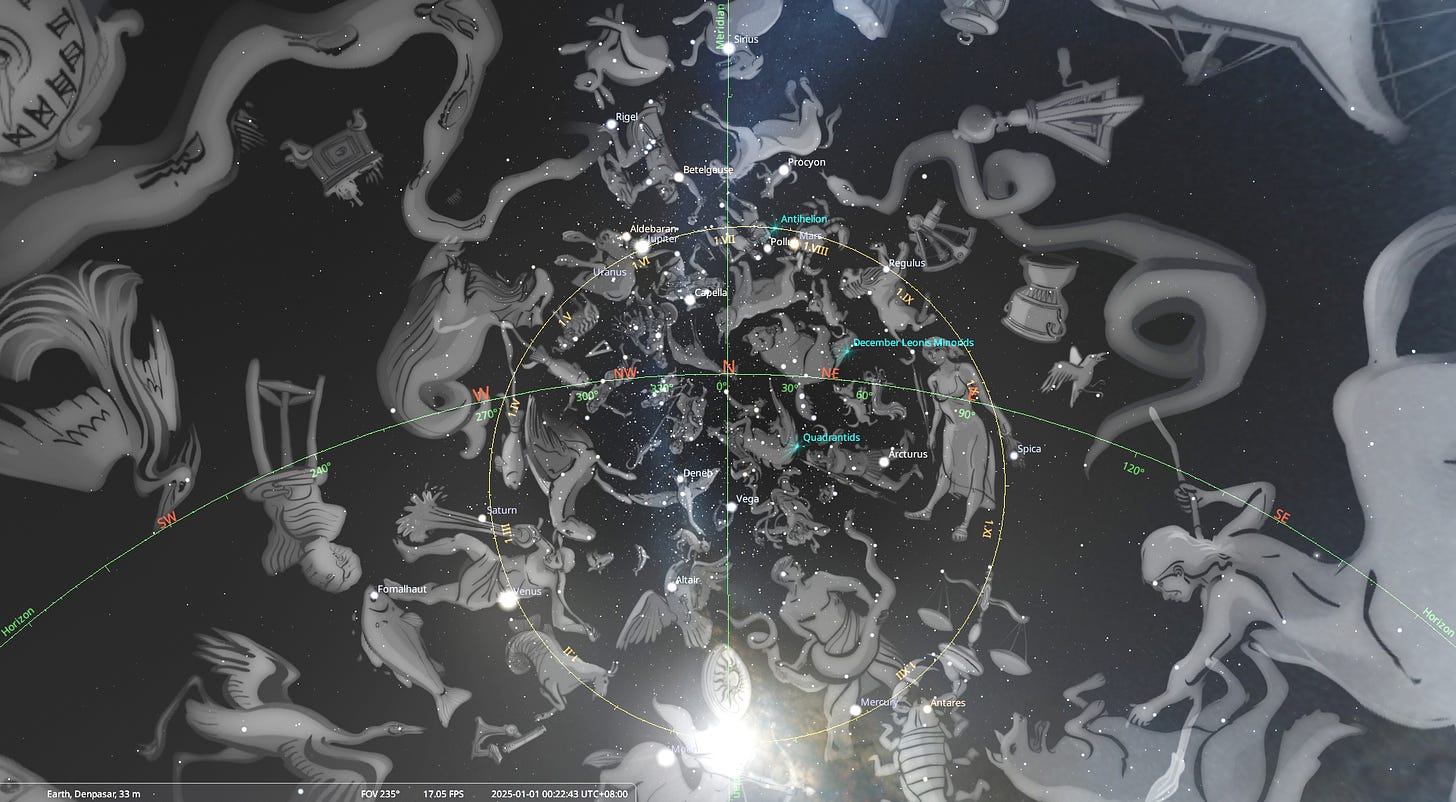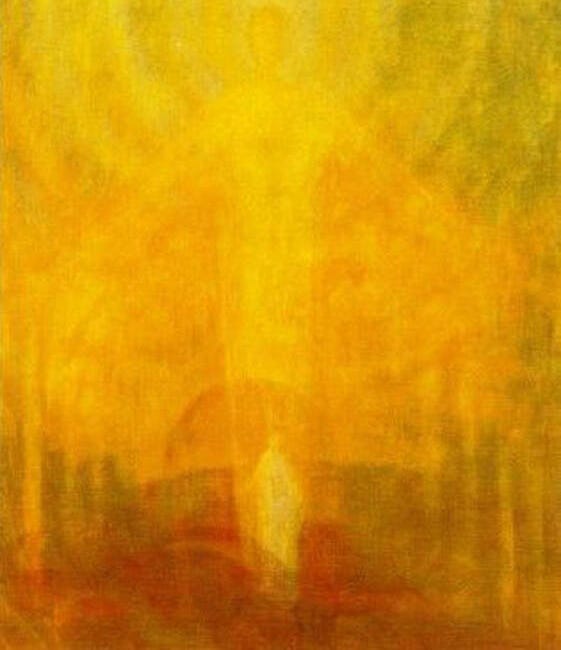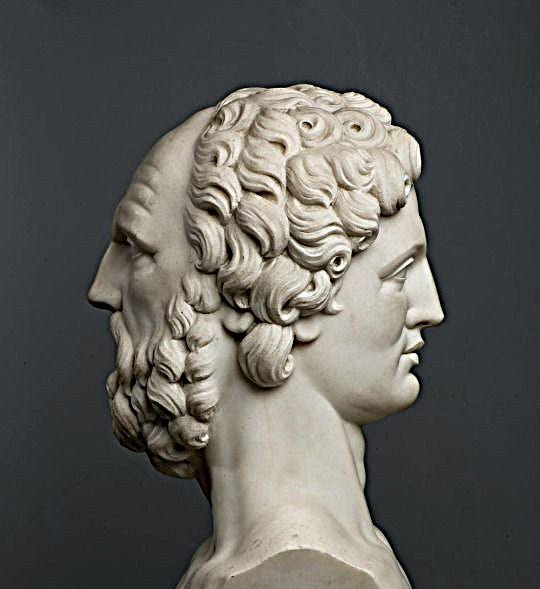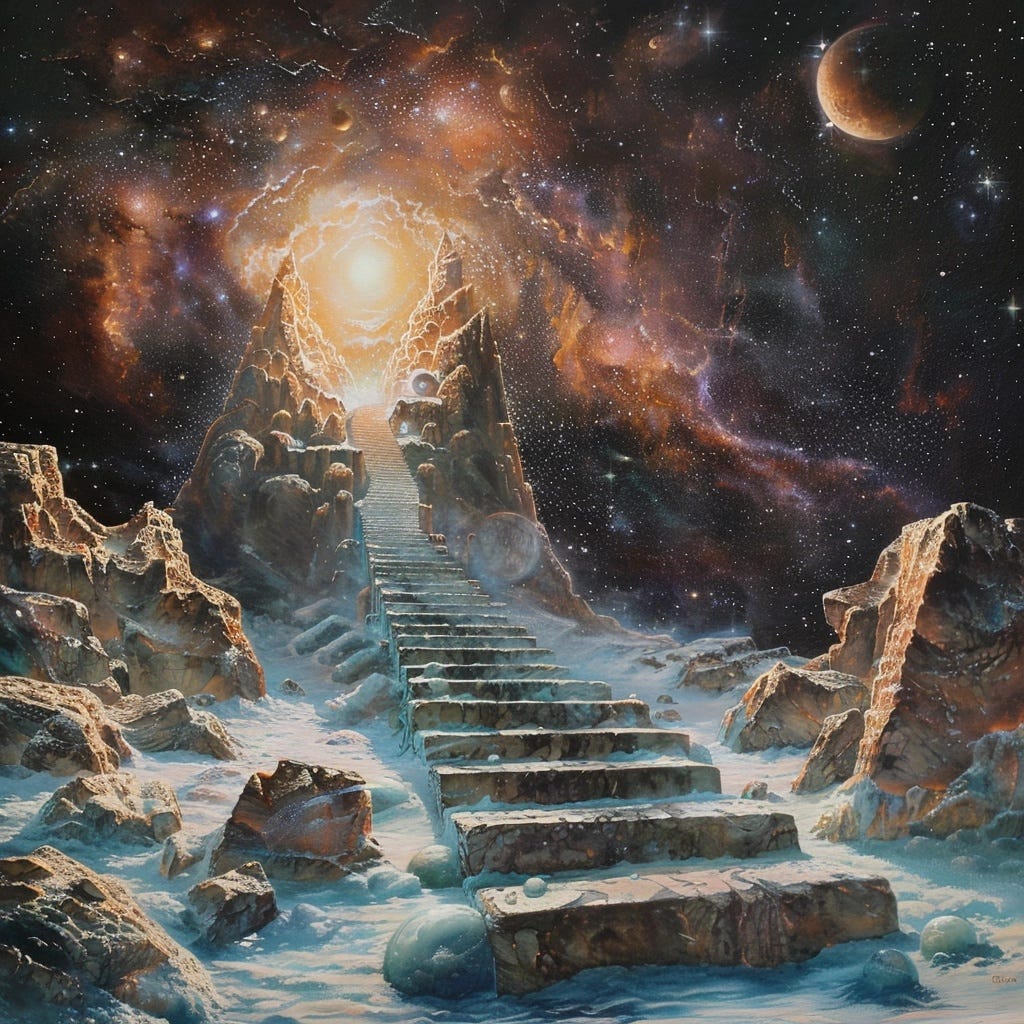Sirius Secrets
New Year's Cosmic Gateway
“Dwell on the beauty of life. Watch the stars, and see yourself running with them.” —Marcus Aurelius
Happy New Year!!!
As the clock strikes midnight on New Year’s Eve, humanity unknowingly aligns with a celestial event that has echoed through millennia. At this precise moment, Sirius—the brightest star in our night sky—reaches its zenith, crowning itself as if to mark our collective passage into another year. This alignment is not merely symbolic; it reflects a profound astronomical reality. When it is midnight on New Year’s Eve at one location on Earth, it is solar noon at the exact antipodes, creating a perfect balance between light and darkness.
This phenomenon cannot be dismissed as coincidence. Its synchronization with the Gregorian calendar’s New Year hints at a deeper, perhaps intentionally hidden, thread of ancient astronomical knowledge and symbolic meaning. The midnight culmination of Sirius reveals an intriguing relationship to the Gregorian calendar while connecting to the ancient Egyptian Sothic calendar and the heliacal rising of Sirius. At the same time, Janus—the Roman god of transitions and namesake of January—stands as an archetypal guardian of this cosmic threshold. Together, these elements underscore a profound interplay between celestial mechanics, mythological symbolism, and humanity’s evolving systems of timekeeping.
Sirius and Its Midnight Culmination
Sirius, the brightest star in our night sky, has been revered across cultures for its brilliance and stability. It is considered a highly stable timekeeper over long timescales because its position in the sky is minimally affected by Earth’s precession. This stability makes it an enduring reference point for ancient and modern astronomers alike.
On New Year’s Eve, it culminates at midnight, reaching its highest point on the local meridian—a celestial moment of transition. This event occurs because Sirius is positioned opposite the Sun in the celestial sphere during this time of year.
This timing is no coincidence. It reflects Earth’s axial tilt and orbital mechanics, which position Sirius perfectly for this alignment during this phase of Earth’s journey around the Sun. While modern astronomy explains this as a natural consequence of celestial dynamics, its synchronization with humanity’s celebration of renewal—the New Year—is striking. Could this alignment hint at an ancient awareness encoded into our calendar?
During the Renaissance, scholars steeped in Hermeticism may have viewed Sirius’ midnight culmination as a cosmic affirmation of renewal—a hidden thread woven into their reforms to align human timekeeping with celestial order.
“Sirius is the hidden god or ‘the Sun behind the Sun.’ As the Moon reflects the Sun, so does the Sun reflect Sirius.” — Esoteric Tradition
The Sothic Calendar and Ancient Egypt
To understand how Sirius became such a profound marker of time, one must turn to ancient Egypt. For millennia, Egyptians observed Sirius—known as Sopdet or Sothis)—with reverence. Its heliacal rising—its first visible appearance at dawn after being obscured by sunlight for approximately 70 days—was a cornerstone of their agricultural calendar.
This event occurred during the Egyptian summer and was closely tied to their agricultural cycle. Specifically, it appeared just before the annual flooding of the Nile, an event that was critical to Egyptian agriculture. Sirius reappearance at dawn marked the beginning of the Egyptian New Year and signaled the start of the inundation season, bringing fertility to their lands.
Egyptian reverence for Sirius’ heliacal rising laid the groundwork for later civilizations’ interest in its celestial cycles. While there is no direct evidence that Egyptians celebrated Sirius’ midnight culmination specifically, their meticulous tracking of its movements over millenia suggests they would be aware of such a significant alignment as this.
Temples such as those at Dendera were oriented toward celestial events. The Isis temple there orienting towards Sirius’ rising point on the horizon, reinforcing the honored star’s role as both a practical and spiritual guide.
The Gregorian Calendar Reform — A Hidden Thread?
In 1582, Pope Gregory XIII introduced the Gregorian calendar to correct the inaccuracies of the Julian calendar and better align it with Earth’s solar year. This reform also standardized January 1 as New Year’s Day across much of Europe, a date that had been sporadically observed since Roman times but was far from universally accepted.
The Gregorian calendar reform can be seen not merely as a correction of timekeeping errors but as an assertion of cosmic order over human affairs, a reflection on humanity’s enduring desire to align its systems with the heavens.
“It is pleasant for an old man to be able to go to bed on September 2 and not have to get up until September 14.” — Benjamin Franklin (on Britain’s adoption of the Gregorian calendar in 1752)
While historical records emphasize the primary motivation for this reform as correcting the timing of Easter, it is intriguing to consider whether those involved in this monumental project were aware of Sirius’ midnight culmination on December 31. The Renaissance was a period of rediscovery, when scholars delved into ancient texts from Egypt, Babylon, Greece, and Rome—texts filled with celestial observations and symbolic knowledge. Could this hidden knowledge have influenced their decision-making?
My article on the cosmic timing of Easter:
The Cosmic Roots of Easter
Ancient origins of festivals and holidays are fascinating to discern, seeking back through the mists of time. Can there be more behind them than mere arbitrary calendar dates celebrating seasonal changes and ancient traditions, especially the movable high holy day of Easter?
Sirius—long regarded as a symbol of cosmic order and renewal—may have been seen by Renaissance astronomers and esoteric thinkers not merely as a star but as a celestial marker of harmony. The alignment of its midnight culmination with the Gregorian New Year may not be coincidental but rather an intentional acknowledgment of its significance. As the brightest star in our night sky, Sirius had been revered for millennia for its stability and symbolic connection to cycles of time. Its prominence in ancient Egyptian cosmology may have echoed through the ages into Renaissance thought.
The Renaissance was also steeped in esoteric traditions such as Hermeticism and astrology, where stars like Sirius carried profound symbolic weight. In these traditions, Sirius was often associated with enlightenment, rebirth, and cosmic order—qualities perfectly suited to marking a new beginning. Scholars working on the Gregorian calendar reform may have recognized Sirius’ midnight zenith as a moment imbued with both astronomical precision and symbolic resonance.
If so, this connection may have been intentionally occulted within layers of symbolism rather than openly expressed. The Renaissance revival of ancient knowledge often blended scientific inquiry with mystical traditions, creating a fertile ground for embedding celestial alignments into cultural frameworks. Whether by design or coincidence, the synchronization of Sirius’ culmination with New Year’s Eve invites speculation about how deeply ancient astronomical wisdom may have been encoded into modern systems of timekeeping.
“Each time we exhale, the world ends; when we inhale, there can be, if we allow it, rebirth and spiritual renewal.” – Tom Robbins
Janus — The Gateway God
To further understand how January became synonymous with transitions and thresholds, one must look to Janus—the Roman god after whom January is named. Janus is depicted with two faces: one looking backward into the past and another gazing forward into the future. He presided over doorways (ianuae), gates (portae), beginnings (principia), and endings (termini), making him an archetypal guardian of transitions.
The choice to dedicate January to Janus reflects his role as a liminal figure who oversees all thresholds—whether physical (like doors) or temporal (like years). Romans invoked Janus at the start of every ceremony or venture; his blessings ensured smooth transitions from one state to another.
Interestingly, before January became Rome’s first month under Numa Pompilius’ reforms (circa 715 BC), March marked the beginning of their year—a martial start dedicated to Mars, god of war. Shifting New Year’s Day from March to January symbolized a transition from warlike priorities to reflective renewals and civil governance under Janus’ watchful gaze.
Somehow that didn’t stop humans warring. Yet this archetypal shift mirrors humanity’s broader longing for reflection and renewal at pivotal moments. Janus’ two faces mirror our collective pause at New Year’s Eve—a moment to honor what has passed while envisioning what lies ahead.
Pompilius’ reform has had lasting impacts. After Pompilius, ancient Rome celebrated the new year on January 1st. This tradition spread to the Byzantine Empire, and during the Middle Ages, many European countries also adopted January 1st as the start of the New Year. The Catholic Church officially recognized this date in 1582 under Pope Gegory XIII, as part of his calendar reform. The United States adopted the Gregorian calendar in 1752. Today, the vast majority of cultures worldwide that use the Gregorian calendar observe January 1st as the beginning of the New Year, thanks to the Janus-based calendrical impulse initiated by King Pompilius millenia ago.
“The contemplation of celestial things will make a man both speak and think more sublimely and magnificently when he descends to human affairs.” —Cicero
Sirius — Marker for Renewal
When viewed together—the midnight culmination of Sirius on December 31 and Janus’ role as guardian of thresholds—a compelling picture emerges: humanity has long sought celestial markers for transitions that resonate both practically and symbolically, and we have them right before us now.
For Egyptians, the heliacal rising of Sirius heralded physical renewal through agricultural abundance.
For Romans, Janus symbolized temporal renewal through reflection and planning.
For our contemporary society, the midnight culmination of Sirius offers cosmic affirmation for our collective celebration of renewal each New Year’s Eve.
This cosmic alignment cannot be dismissed as mere coincidence. The precision required for Sirius’ culmination to align so closely with our calendrical New Year suggests intentionality—whether by ancient astronomers encoding occult knowledge into systems that survived millennia or by Renaissance scholars preserving esoteric traditions within modern frameworks.
A Cosmic Threshold
As one stands beneath the night sky on New Year’s Eve and watches Sirius crown itself at midnight’s zenith, one participates in an ancient ritual far older than our modern celebrations. Whether consciously or unconsciously, humans align themselves with cycles that transcend individual lifespans yet remain intimately tied to our sense of time’s passage.
“Sirius, the brightest star in the heavens.... My grandfather would say we're part of something incredibly wonderful—more marvelous than we imagine. My grandfather would say we ought to go out and look at it once in a while so we don't lose our place in it.” —Robert Fulghum
Sirius—our brightest star—reminds us that even amidst darkness there is light to guide us forward. Janus—the two-faced god—teaches us that every ending is also a beginning. Together they form a cosmic doorway through which humanity steps each year—a threshold marked not only by clocks but by stars themselves.
Perhaps it is no accident that humanity chooses this moment to celebrate renewal; it reflects an enduring awareness encoded into our calendars not just by chance but by design—a design rooted in celestial rhythms that continue to shape our lives even when forgotten or hidden from view. What other hidden threads might connect our modern calendars to ancient celestial wisdom? As we step through this cosmic doorway each year, perhaps it’s time to look upward—and inward—for answers.
“The future is always all around us, waiting, in moments of transitions, to be born in moments of revelation.” – J. Michael Straczynski
Support Independent Research into Hidden Knowledge and Unexplored Horizons
Thank you for reading, I hope you enjoyed this. Your engagement enables deep investigation into fundamental aspects of existence that mainstream academia often neglects. This work examines critical historical and scientific understanding through alternative perspectives.
🎯 Make a Direct Impact:
PayPal: paypal.me/alkemix33
Why Support?
Each contribution facilitates:
Investigation of overlooked historical evidence
Research into alternative scientific paradigms
Documentation of significant findings
Creation of original content that challenges conventional narratives
Whether you:
Share these insights with fellow researchers
Contribute to ongoing investigations
Engage in meaningful discourse
You're helping illuminate paths of knowledge that deserve deeper examination.
"The gift is to the giver, and comes back most to them" - Walt Whitman













Enlightening, clearifying and somewhat comforting! Thank you! <3
Brilliant! Do you have any bibliographical sources that you base your writings upon?